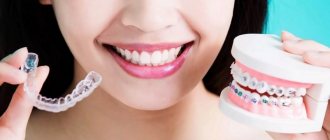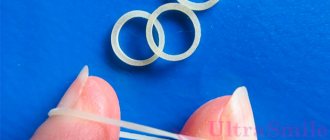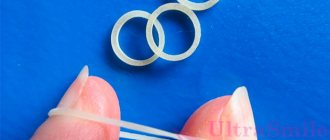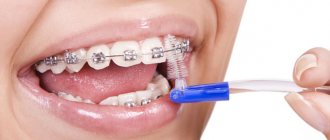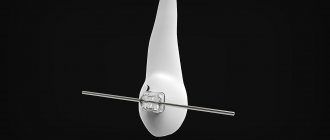The Tooth Fairy is one of the most popular characters in American folklore. A considerable part of children around the world sincerely believe in her, films and cartoons are made about her, she advertises dental services and hygiene products...
She is usually represented as a classic fairy - a little girl with wings, dressed in a beautiful dress. She flies to the children at night to pick up their lost baby teeth, and leaves a coin in their place.
Belief in the tooth fairy is believed to help children cope with the fear and anxiety caused by tooth loss. It also convinces them to be more attentive to their own health and hygiene - especially if you clarify that the fairy does not pay for rotten goods.
But why is she even doing this? Why does she need baby teeth? How much does she pay for them, and where does she even get the money?
A little about fairies
Although the tooth fairy seems like something fashionable and modern (especially to residents of the CIS countries, who learned about its existence only in the 90s), the roots of this myth go deep into history.
Spanish tooth mouse Pepper illustrated by Mariano Pedrero
Like many mythological characters, she came to America along with immigrants from Europe. Although the collector of children's teeth was not as popular there as overseas, especially when compared with ordinary fairies and elves, its analogues exist in almost all European countries and their former colonies.
In some places, instead of fairies, children are visited by angels or the souls of other children sent from heaven. However, in most cases, the role of the tooth fairy is played by mice. For example, in France these are just tooth mice, in Italy - Topolino, in Spain - the mouse Pepper. The latter also moved overseas and gained some popularity in Mexico and other Spanish-speaking countries.
If you look a little deeper into history, in the Scandinavian countries they paid for baby teeth... berserkers. Viking warriors considered such teeth to be a talisman that brought good luck in battle and sometimes made themselves entire necklaces from children's teeth. A reflection of this belief even made its way into the Eddas, where Tand-Fae is mentioned - a fairy who collects teeth. Which is the earliest description of the tooth fairy.
Where to put baby teeth
Throwing away baby teeth that a child identifies as part of himself is fundamentally wrong. And ancient signs say that proper handling of baby teeth promises health and well-being for the child.
That's why the Tooth Fairy is already waiting for a tooth!
The legend of the Fairy has been floating around the world for almost 150 years. The writer Luis Coloma first told about it to the eight-year-old King of Spain Alfonso XIII. And to this day there is not a single refutation of the fact of the existence of this good sorceress.
But how can we send valuable cargo to Fairy? Wait until evening and let the child put the tooth under the pillow himself. Be sure to say out loud the time-tested spell: “Mouse, mouse, bring the Fairy a milk tooth, and bring me a new one - bone and durable.” After this, the baby can go to bed. Surely in the morning he will find under his pillow, instead of a tooth, a small gift from the good Fairy, who is surprisingly similar to his mother.
According to legend, transportation of the tooth to its destination is carried out with the utmost care, as befits the handling of valuable cargo.
A caring gray mouse carefully takes a tooth from under a sleeping child’s pillow and gives it to the little mice, who know the way to the magical palaces very well. There they are greeted by the blond Tooth Fairy with a dazzling smile.
But why does the Fairy need millions of children's teeth from all over the world? Legend has it that she builds them into a wonderful snow-white palace with openwork walls, vaulted ceilings and carved windows. Under the rays of the sun, small teeth shine like pearls, creating a fantastic flickering light inside the palace.
Colorful, joyful dreams are born in this magnificent palace. With a light breeze, they leave the palace and scatter into the beds of those children who washed their face and brushed their teeth before going to bed. During sound sleep, children grow quickly and gain strength.
Why does the tooth fairy collect teeth?
A superstition associated with witchcraft stretches back from the Middle Ages - possessing someone else’s tooth can give power over the person to whom it belonged (therefore, especially superstitious inhabitants of the Dark Ages preferred to burn lost teeth rather than give them to a fairy, who was also considered by the church to be a lesser demon).
A not-so-kind version of the tooth fairy from Hellboy 2
This suggests a logical conclusion - for a small fee, tooth fairies gain power over a huge number of people. What some modern postmodernist creators recall - for example, Terry Pratchett in the book “Santa Hryakus”.
However, usually the tooth fairy is a positive character and does not use children’s teeth to gain world domination. You can often come across the version that she collects teeth in order to maintain children's faith in fairies. After all, if they stop believing in her, she will disappear. This option is described in the cartoon “Keepers of Dreams”.
A less popular, although also quite obvious reason is shown in the French cartoon about the French analogue of the tooth fairy “Ernest and Celestine” - mice collect teeth in order to build their underground cities with their help - their entire civilization literally stands on children’s teeth.
Help from doctors from the Shifa clinic
But, unfortunately, not all children know how to properly brush and care for their teeth. The dentists of the Shifa clinic come to the rescue. Attentive and kind doctors will conduct a preventive examination and be sure to explain to the kids:
- Which toothbrush is better to choose?
- Which pasta is more suitable for children depending on their age.
- What movements should you use to brush your teeth?
- What mouthwash is recommended to use after brushing your teeth?
- How often should you visit the dentist?
- What products will help keep your teeth white and intact?
And experts will tell adults in confidence where modern parents put their children’s lost teeth. It turns out that these organs are a source of stem cells, so they can be stored in special stem cell bank laboratories. And if you suddenly need a transplant or complex anti-oncological treatment, baby teeth will come to the rescue. This is the modern idea of medicine about these temporarily existing organs.
A milk bite does not last long, unlike a permanent one. Therefore, in order for your molars to last as long as possible, monitor their health and be sure to come for a preventive appointment with the dentist. The Shifa clinic provides comprehensive examination and treatment of the condition of the dental system. Sign up for a consultation at a convenient time!
How much does the tooth fairy pay?
(Do I need to clarify that the price for teeth is determined by parents?)
Mythology does not specify the exact price, but it is said that the fairy leaves one coin for one tooth. And money in coins in our time is much less than money in papers...
In 2013, the Visa company (the same one that produces payment cards) conducted an interesting study, during which the exchange rate of the teeth of small American capitalists in relation to the dollar was clarified - on average, a fairy leaves a child 3.7 dollars, that is, about 280 rubles in modern terms course.
Waiting for the Tooth Fairy or When do the first baby teeth fall out?
Many parents are concerned about the question of when should the first baby tooth fall out . Endless questions begin from mothers of the same age, dentists and local pediatricians - when, when?
The issue of changing baby teeth is purely individual. But there is a relationship between the eruption of the first tooth and their subsequent replacement with permanent ones. As a rule, the early appearance of milk teeth foreshadows the corresponding growth of molars. On average, a child will have his or her first permanent incisor in the lower jaw at 5 years of age. Changing teeth is a mechanism for pushing out milk teeth - permanent ones. First, the root of the tooth dissolves, then its upper part begins to wobble and falls out, and a new tooth grows to replace it. The sequence of tooth loss usually coincides with the order of eruption. The change begins with the incisors and so on until the last. The milk bite has 20 teeth. At the age of 12-16 years, all permanent teeth erupt. Sometimes wisdom teeth appear with a delay of several decades, but this is the norm until the age of 30.
So, the long-awaited moment happened, and the first milk tooth left a number of its fellows. What should you do besides calling the Tooth Fairy? After a tooth falls out on its own or is forced to be removed, you should apply a piece of sterile bandage to the resulting hole and bite it for 10-15 minutes. Usually this time is enough to stop minor natural bleeding. When, after 20 minutes, blood still appears, you need to change the bandage and see a pediatric dentist. It may happen that the tooth becomes loose in the late evening. Then it is better to stock up on a pharmacy collection of nettle or sage in advance, make an infusion and cool it. It is dangerous to leave a loose tooth overnight, as involuntary movement of the tongue can cause it to come off, which can cause it to enter the respiratory tract. Therefore, it is important to lose a tooth before going to bed. And if the bleeding does not stop, soak a sterile bandage with herbal infusion and clamp it in the hole. You need to ask the child not to swallow the infusion that has accumulated in the mouth; it is better to spit it out and replace the tampon with a new one. After a day, you can rinse your mouth with soda or a weak saline solution.
Changing baby teeth is always an event not only in the life of a child, but also of the whole family.
Does the tooth fairy exist in real life?
Some will call her a fairy tale, some will claim that they managed to meet her, and some will not care about her at all. In order to be sure whether the tooth fairy exists in real life, there is only one way - to try to see it. You can set up an ambush and watch the tooth left for her until dawn, pretending to be asleep. Leaving a video camera on all night is also a good way to find out the truth. You just need to remember that trying to get to the bottom of the truth can easily destroy all the magic, scare away the fairy and be left without gifts at all.
A professional dentist is a real tooth fairy, or at least her faithful assistant. The doctor will carefully ensure that your teeth remain strong, even and beautiful, so you must listen to his advice, follow it carefully and come for regular check-ups. Brushing diligently, taking care of it and treating it in a timely manner are simple recommendations, following which you will not be ashamed to show your fallen baby teeth to any fairy.
How to summon the tooth fairy?
The elf helpers do not always have time to inform the sorceress about all the children who will soon lose a tooth. To give her what she deserves and receive a gift, you can simply tell her that it’s time to come. So, for the tooth fairy to come, you need a ritual:
- Place the tooth under the pillow.
- Before going to bed, say: “the magic fairy will appear for the tooth, I will dream about you tonight,” or invent another enticement for her.
- Go to bed and meet her in a dream, answering the question of what you want in return for a tooth.
- In the morning, under your pillow, find a souvenir from her.
You can put a fairy bait not only under the pillow, but also in a glass of water by the bed or in a special box so that it doesn’t roll away at night. But what to do if a tooth falls out and is lost? The tooth fairy will definitely find him and bring him a reward. You just need to write a letter to her with her parents, in which they write approximately where the tooth could have been lost. It happens that the gift does not appear on the same night when the ritual was performed, but all because the fairy has a lot of work. The main thing is to make sure that your teeth are clean and healthy, and this work will certainly be rewarded.
Why store baby teeth?
The therapeutic use of stem cells has attracted great interest in the medical field. It has been a slow but steady journey from laboratories to clinics, but it is certainly one of the most important. A specific area of research is the integration of stem cells in the development of life-saving drugs. For example, cancer cell lines are used to screen potential anticancer drugs. Using stem cells, scientists can test new drugs on a wider variety of cells. From one baby tooth you can get up to 20 stem cells.
Replacing information sources: how to cope with stress from news in the media
A device for communicating with plants was developed by scientists in Singapore
Strengthens bone tissue and more: why you should include boiled pork in your diet
The most important research involves tissue regeneration. Doctors are currently in need of donor organs and tissues that are needed for transplantation and other surgical reconstruction procedures. But often the demand is greater than the supply. Thanks to stem cell therapy, those working in the medical field have a new alternative way to treat diseases such as spinal cord injury, stroke, heart disease and diabetes.
Is it necessary to treat pulpitis on baby teeth?
Pulpitis is an inflammation of the tooth nerve and surrounding soft tissues.
How does pulpitis manifest on baby teeth:
- The cause of pulpitis may be an advanced stage of caries.
- Inflammation of the nerve and gums can be caused by tooth injury.
- In case of erroneous treatment of caries, when an inexperienced dentist accidentally opens the pulp chamber.
- Sore throat can also cause pulpitis.
Pulpitis on baby teeth rarely occurs, but it must be treated.

